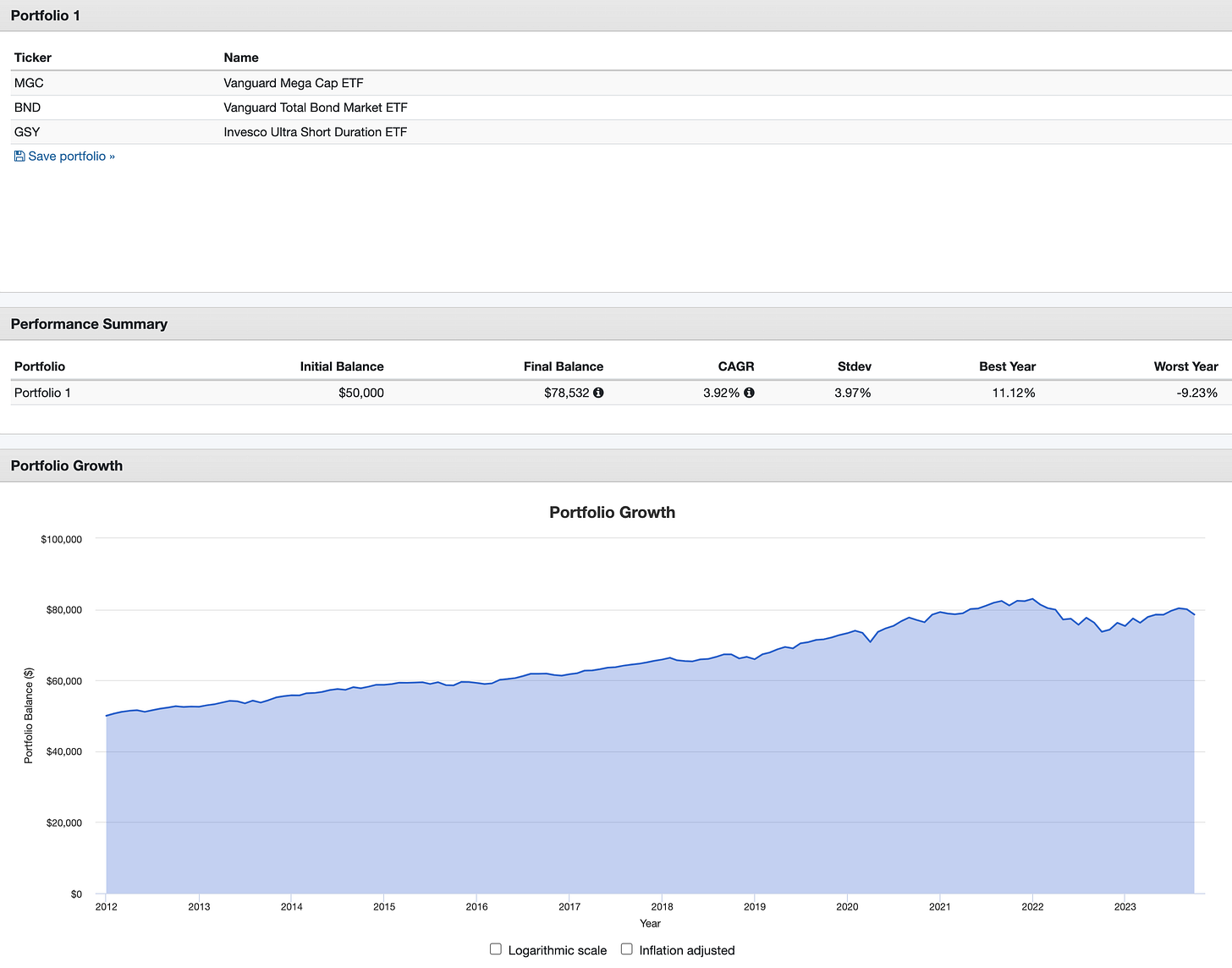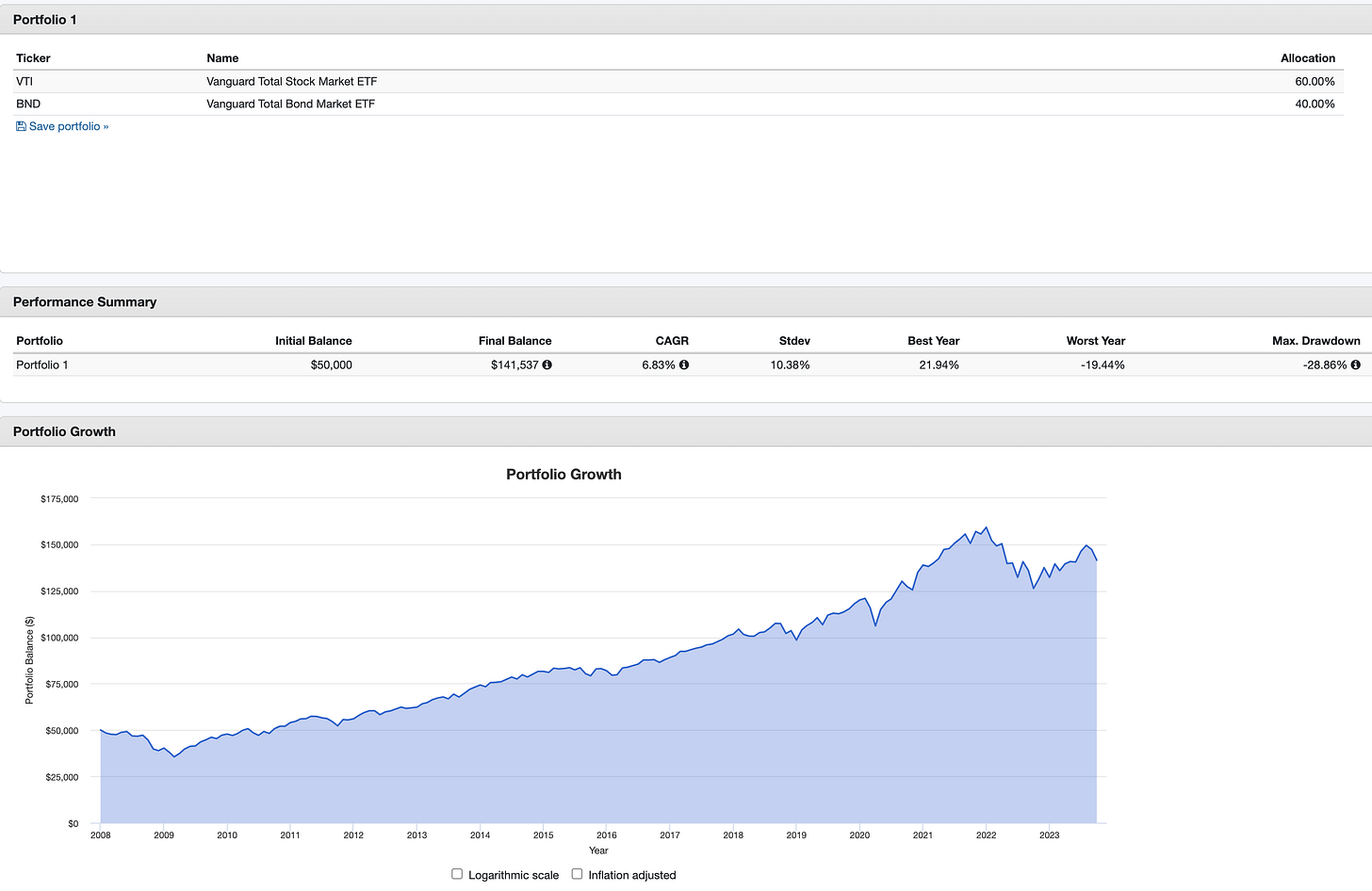My doctor is amazing at what he does but does not know much about investing. He requested a post on “Investing for Newbies”. We are going to oblige, but since we are Cycles Edge, we are going to discuss basic investing knowledge in Part 1 and Investing for Newbies with Cycles in Part 2(coming in a few days)!
Basic Investing Knowledge: Here are the most basic principles of investing:
Risk & Reward: Higher risk can provide higher reward, but it comes with higher volatility. Lower risk usually provides lower reward but has less volatility. In general, equities (stocks, preferred equity) are higher risk and fixed income (bonds, treasuries) is lower risk. Here are the subcategories to know:
Beta - Within equities “high beta” stocks (growth, small companies, technology) tend to be more volatile (move up and down rapidly), and “low beta” stocks (value, large companies, consumer staples) tend to be less volatile.
Interest Rate Risk - Within fixed income, there is interest rate risk and credit risk. The longer the duration (time until the debt is repaid), the greater the interest rate risk. That means as interest rates increase, the market price of bonds falls, and the price of bonds that have a longer duration falls harder. The caveat is, that if you hold your bond until maturity, you will get repaid at par.
Credit Risk - Corporate bonds have a credit risk component. Basically, if the company does poorly (lower revenue and net income) they may have more trouble paying their interest and debt service or may have trouble repaying or refinancing the bond when it comes due. The weaker the financial strength of the company, the greater the credit risk.
Goals & Time Horizon: The investor should invest according to their goal and their investing strategy should have a reasonable time horizon. Most people invest for retirement and thus the longer time you have until retirement, the more risk you could take. That is why most younger workers have 401k plans that are mostly or fully invested in equities. An older worker who has fewer years until retirement tends to have a lower equity allocation and a higher fixed-income allocation. The rule of thumb is that your age should equal your fixed income allocation. For example, if you are 46 years old, you could consider having a portfolio that is 46% fixed income and 54% equity. Having a mismatched goal and time horizon will not yield good results. For example, if I had $10,000 and wanted to make $50,000 to buy a new car in one year, that would be considered low probability. Earning 7% a year on average over 40 years to retire comfortably is reasonable. It is also recommended that investors buy and hold and not trade, as short-term trading is very risky. Another rule of thumb is that 7 years is the cutoff for “long-term investing”. So if you need to use the invested funds in less than 7 years, your time horizon would not be considered long term.
Diversification: Investors should have diversified portfolios. That means, instead of putting all your money in one stock, you should own a diversified basket of many stocks. It “washes out” company-specific risk, also known as “idiosyncratic risk”. The S&P 500 is often used as a diversified basket of stocks, and it has 503 stocks in it. The Nasdaq 100 has 101 of the best growth companies in it, although it could be heavy on the growth allocation. Imagine if you put all your money in one stock before it announced bankruptcy…ouch. It is said that the one free lunch is known to be diversification. How many companies should you own? Some say that the more the better. Some say that 30 companies in different sectors and industries will provide the bulk of the benefits of diversification. Note that diversification also applies to fixed income. Imagine allocating 100% of your fixed-income portfolio before they announce that due to their revenues dropping like a rock, they can no longer pay interest…ouch!
Asset Allocation: Professionals use the below 3x3 matrix to diversify equity portfolios. The matrix differentiates by company size (Large, Medium, Small) and valuation (Value, Blend Growth). If you own a bit of each category, you could buy and hold throughout many different market cycles. Note that market cycles are driven by growth, inflation and interest rates.
High Growth + Low Inflation + Declining Interest Rates = Growth companies tend to outperform, especially small-cap growth.
Low growth + High Inflation + Rising Interest Rates = Value companies tend to outperform, especially large-cap value which is seen as a flight to quality.
Find your Return Number: It is advised that after an investor understands their goal, time horizon, and risk tolerance, they create a portfolio that will provide an acceptable annual expected rate of return. Here are some examples using a free Portfolio Visualizer:
Low-Risk Portfolio: A person who has only a few years until retirement and cannot afford to lose much money should choose an asset allocation of mostly fixed income and a smaller portion of lower-risk equities (value or dividends or utilities, etc) and that portfolio could have an expected annual return in the 3% to 4% range. Below is an allocation with an expected return (CAGR) of 3.92% and a standard deviation (how much it can normally go down) of 3.97):
Growth Portfolio: A person who has over 20 years until retirement, and wants to take big risks to get big returns, should have a portfolio heavily weighted in high beta equity (growth, technology, etc.). The following allocation has an expected return (CAGR) of 8.77% and a standard deviation of 18.29%.
The 60%/40% Portfolio: The 60%/40% portfolio is a portfolio that is known to be well-balanced. It has an expected return (CAGR) of 6.83% and a standard deviation of 10.38%:
Compounding and Dollar Cost Averaging: Diversification and Compounding are known to be the two magic ingredients in portfolio management. Diversification reduces risk. Compounding increases return and is basically the idea of profits earning a return in addition to the initial invested capital. A sister concept is Dollar Cost Averaging, which is new invested capital contributed on a set schedule earning a return. Both Compounding and Dollar Cost Averaging equals…the pool of invested assets growing and the expected return rate applied to the growing pool of assets yields an exponentially higher growth in the portfolio.
Strategic or Tactical Allocation: Professionals often choose for their clients either a Strategic Allocation (portfolio is rebalanced annually) or a Tactical Allocation (portfolio is rebalanced every 3 or 6 months) strategy. Often the most suitable strategy is the one that suits the client’s investing personality. Professionals often add value as a Behavioral Coach and make their clients stick to an investing plan over the long term.
Have a Plan of Action: In summary, investors need to have a plan, which entails understanding their risk tolerance, expected return, goals, and time horizon. They can then choose a portfolio asset allocation and choose a strategy (strategic or tactical). They then must schedule times to invest more into the portfolio (like dollar cost averaging) and reinvest dividends to gain the benefits of compounding. Finally, they have to stick with the plan. That is investing in a nutshell.
“No One Can Predict The Market”: Professionals always say that no one can predict the market. And it is true in a sense…no one can consistently guess that the market will go up at a certain time and be exactly right. So far I haven’t met anyone who can say “Tomorrow at 3:05 pm the market will jump up” and be right consistently. Because of this, the buy-and-hold style of investing makes more sense than active investing for most people…but since we are Cycles Edge we apply cycles and other timing techniques to provide an edge to investing. This will be covered in Part 2 of this educational series.
Disclaimer - All materials, information, and ideas from Cycles Edge are for educational purposes only and should not be considered Financial Advice. This blog may document actions done by the owners/writers of this blog, thus it should be assumed that positions are likely taken. If this is an issue, please discontinue reading. Cycles Edge takes no responsibility for possible losses, as markets can be volatile and unpredictable, leading to constantly changing opinions or forecasts.








